The Memory Center Platform (MCP) is a software platform developed by the Italian partner ENGINEERING INGEGNERIA INFORMATICA, during the implementation of the SO- CLOSE Work Package 3.
The MCP provides a web interface that enhances user usability; in fact, the platform is multilingual and can be displayed in six different languages. It also provides a number of basic accessibility functions for people with disabilities that can be easily activated by users.
The MCP then can be used by Cultural Institutions, academics, artists, general public to: show, store, search, visualise, share, download, aggregate and create new cultural heritage contents about refugees and migrants.
The MCP platform is multilingual and its sections can be viewed in English, Italian, Spanish, Catalan, Greek and Polish.
The language selection can be done through a special selector on any web page of the platform.
The main purposes are:
- Provide a unified access point:
◦ to visualize and share all the contents produced by CIs by TOOLS
◦ to create and store new atomic contents for each CI
- Provide internal management services to add new CIs and new collaborator users able to work on MCP contents
- Gather in automatic way new contents coming from external sources as websites and social network
- Provide Cultural Institutions with a PUBLIC COLLECTION section useful for disseminating (to public users or others CIs) Stories, Webdoc videos, posts social or other contents useful to expose topics related to the cause of migrants and refugees to all public users of the CIs
- To make available for CIs many contents with additional information (metadata) helpful to build new related stories (or enrich stories already created) using the TOOLS
- To store new additional user content (web linked and multimedia files from PC user) useful to create new stories by the TOOLS
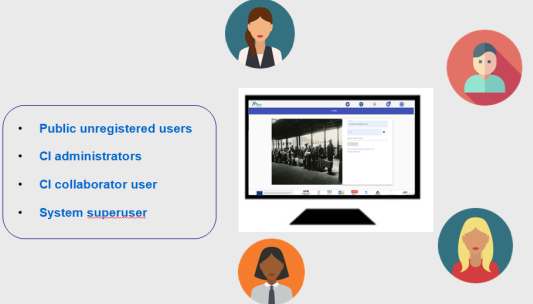
Fig. 1 – MCP Users
The MCP Users
The Memory Center Platform (MCP) can be used by 4 types of users (Fig. 1):
- a larger set of “unregistered users”, that are the general public who can only view and share MCP content as StoryMaps, WebDocs and Virtual Exhibitions via the PUBLIC COLLECTION public section;
- a set of “CI administrators”, one for each CI configured on MCP;
- a set of “CI collaborator user” that are professional users authorized to work on the contents of a particular CI;
- a single MCP system administrator named “MCP superuser”.
The CI administrator is responsible for approving registration requests to the MCP for the specific CI, or deleting such registration if necessary.
The CI collaborator user is the user role responsible to upload content items (videos, images, audio, texts, etc.), and manage their metadata (their copyrights in particular) for a defined CI.
The MCP superuser is responsible for creating new Cultural Institutions instance and the CI administrators on MCP system and he can update their data. This user then is able to guarantee the MCP scalability to multiple different Cultural institutions (not necessarily only the ones partecipating in SO- CLOSE).
MCP accessibility features
MCP offers users a number of basic accessibility functions. When a user first logs in to MCP, the accessibility options window is presented to allow them to choose how they prefer to navigate the pages of the platform (Fig. 2).
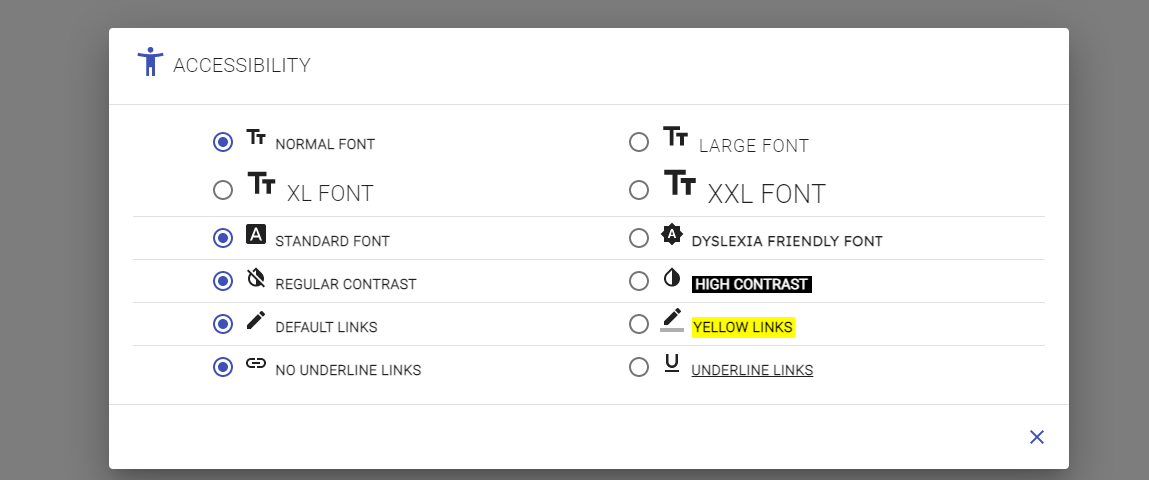
Fig. 2- Accessibility Functions
After the first access to the MCP platform the accessibility features will be accessible by the button that is present in each page and allow user to select the accessibility options to:
- Modify the font size with 4 levels of fonts (normal, large, Xlarge and XXLarge)
- Adapt the font for dyslexia suffering persons
- Choose the visualization contrasts
- Highligth the links with a yellow background
- Underlines the links to optimize the visualization If during navigation the user wishes to modify some accessibility features he has chosen, he can always do so by pressing the accessibility button
The MCP home page
The MCP Home Page can be viewed by all registered and unregistered users. (Fig. 3).
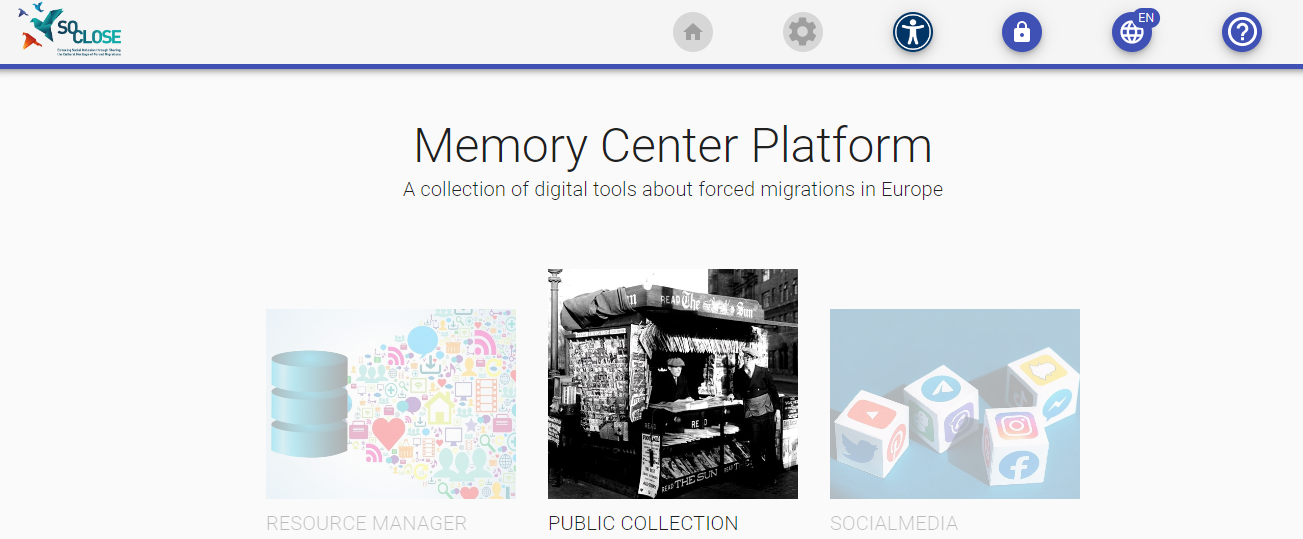
Fig. 3 – MCP Homepage
The first page displayed when a public (or registered) user log in to MCP presents the Public Collections of storymaps, webdocs and other elements published by all the CIs that use the MCP platform.
Clicking this central section image, any unregistered public user can view the page with the published contents as follow:
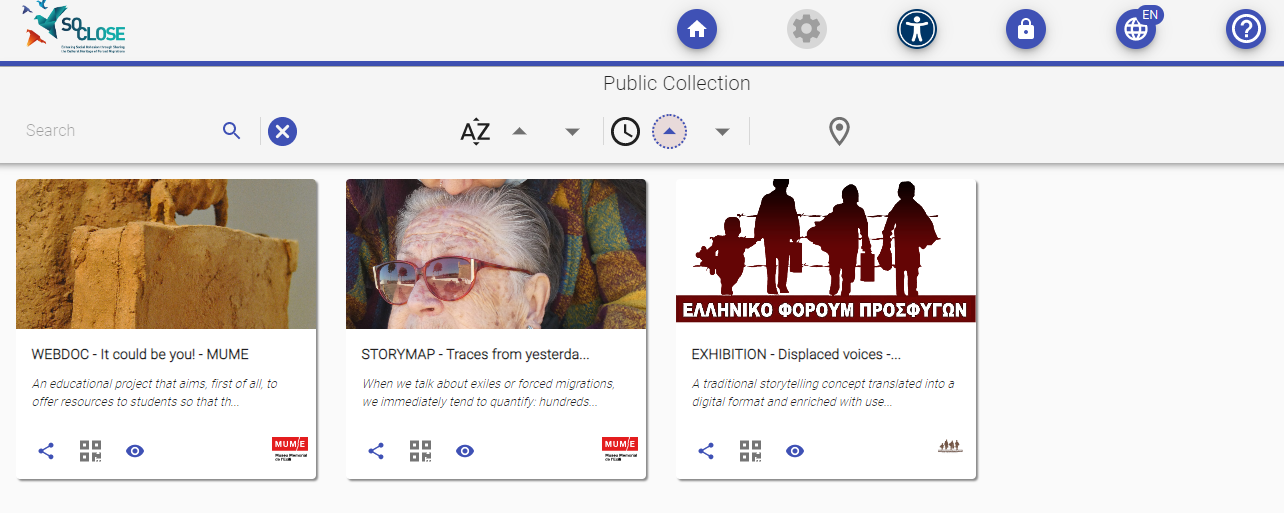
Fig. 4 – Public Collection Cards
This section (Fig. 4) presents cards (like those used in EUROPEANA portal) with an image, a title and a description for each Storymap, Exhibition or Webdoc published.
The user can:
- Choice/visualize content items to visualize and navigate it directly in a new page
- Generate and share the content link
- Generate and download a content QR code
Main Sections for registered users
A user already registered to the MCP platform, when logging in, views the following page, which contains three active sections (Fig. 5):
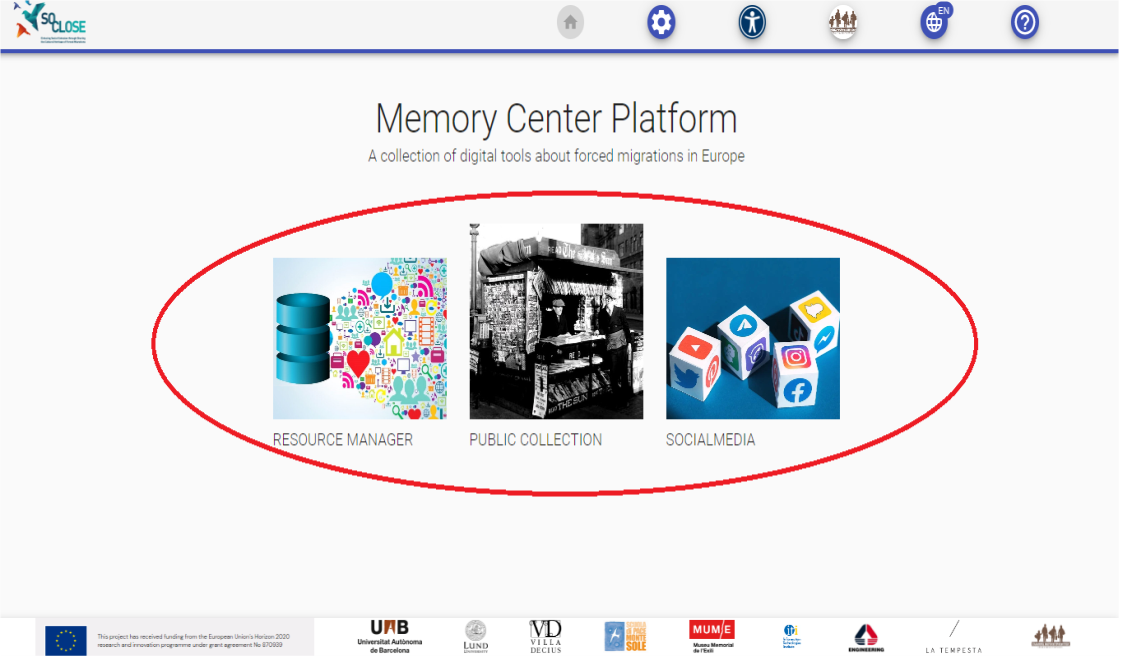
Fig. 5 – Sections for registered users
The active sections feature the following functions:
- RESOURCE MANAGER: to add new content or manage attributes for content already stored in the MCP.
- SOCIALMEDIA: to search social content by keyword.
- PUBLIC COLLECTION: to show all html5 approved (by all CIs) for publication; these items can be complex content items, as it is the case for the So-Close “PROJECTS” (story maps, web docs, and virtual exhibitions) developed by La Tempesta TOOLs, which are among the most important items in this category, but also atomic content items (such as a video or a picture).



